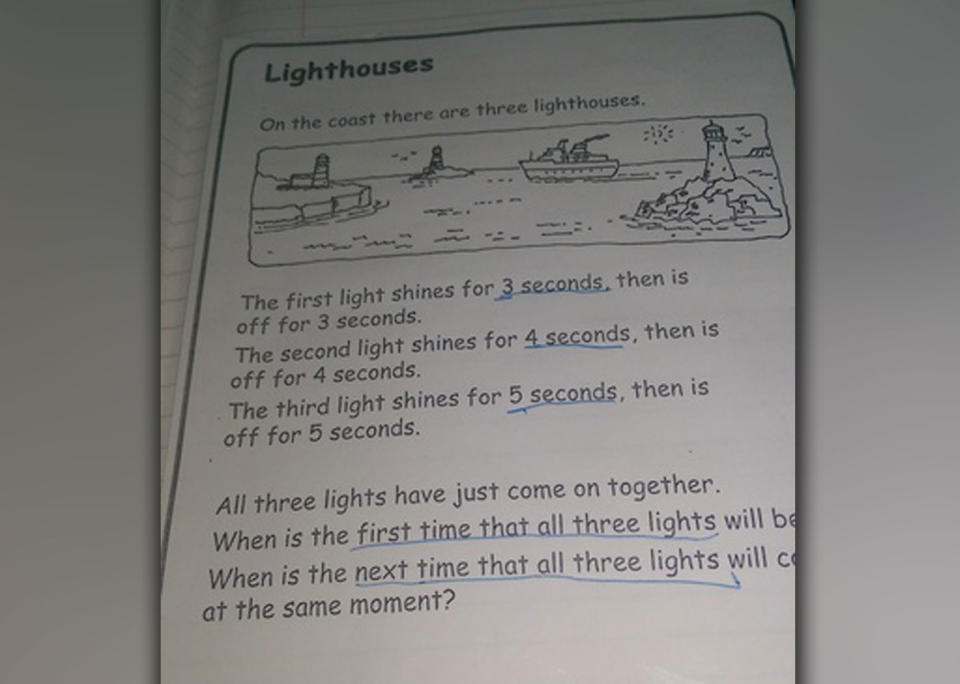Mums baffled by primary school maths question - but can you crack it?
A maths problem meant for primary school students has left parents baffled over its complex nature.
Confused mothers have taken to the internet in search of answers after struggling to solve the homework question designed for eight-year-old pupils.
“Can someone help with this KS2 homework?” one mother wrote on parenting blog Mumsnet.
“I’m baffled by it even though, since it’s dd2’s homework, I probably should be able to work it out.”
The question asks students to work out when three different lighthouses will shine their lights at the same time and when they will be off at the same time.
And the mother wasn’t alone with other puzzled parents chiming in.

“That is a ridiculous question and I”m only here to learn something,” one user wrote.
The question begins: “On the coast there are 3 lighthouses.”
“The first light shines for 3 seconds, then is off for 3 seconds. The second light shines for 4 seconds, then is off for 4 seconds. The third light shines for 5 seconds, then is off for 5 seconds.”
“All three lights have just come on together.
‘The kids looked peaceful’: Father of children killed in family massacre speaks
How two grandfathers survived a freezing night lost in the bush
‘Look after yourself and Daddy’: Mother’s last letter to son before she died
“When is the first time all three lights will be off together? When is the next time all three lights will come on at the same moment?”
While most contributors agreed on the first question’s answer being five, there were varying answers for the latter.
Some believed the answer to be 25, others 120 and several said the first three seconds.
Several mothers explained in great length that the key to answering the question is to work out the common multiples between the schedules of the lighthouses.
With the first light coming on every six seconds, the second every eight and the third every 10, problem solvers have to work out the lowest number that can be divided by all those numbers.
After lengthy discussion using the above method, the general consensus online for the second question turned out to be 120, which was indeed the correct answer.


